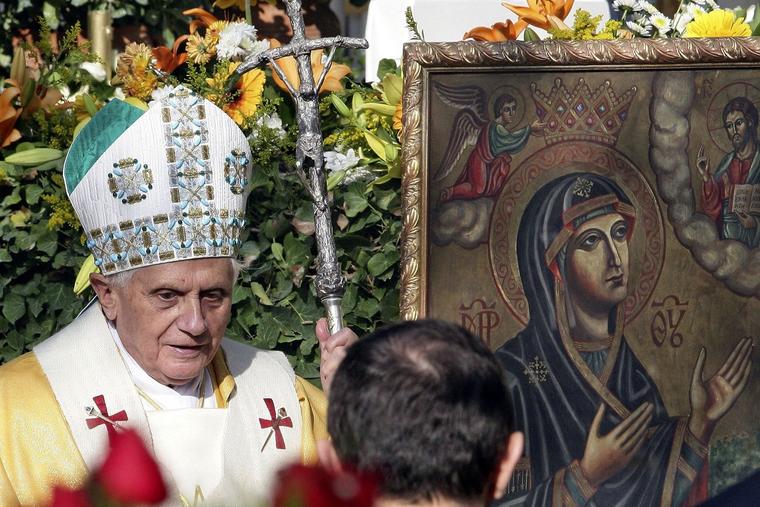- Feb 5, 2002
- 166,683
- 56,298
- Country
- United States
- Faith
- Catholic
- Marital Status
- Married
- Politics
- US-Others
The late pope expounded on the ‘great capacity for loving others which their femininity bears.’
The first encyclical of Pope Benedict XVI, titled Deus Caritas Est, that is, “God Is Love,” ends with the late pope calling on Mary, the Mother of the Lord, to show us as the Church how to live God’s love in the world:
Holy Mary, Mother of God,
you have given the world its true light,
Jesus, your Son — the Son of God.
You abandoned yourself completely
to God’s call
and thus became a wellspring
of the goodness which flows forth from him.
Show us Jesus. Lead us to him.
Teach us to know and love him,
so that we too can become
capable of true love
and be fountains of living water
in the midst of a thirsting world.
His papal emphasis on Mary as an example for the whole Church was merely a continuation of his theological understanding of Mary from his thought as Cardinal Joseph Ratzinger. Pope Benedict held a great love and reverence for the Blessed Mother, and his understanding of her is connected to his understanding of women and the feminine genius and the Church as a whole.
As Cardinal Ratzinger, Pope Benedict expressed concern that devotion to Mary must be guided by the faith of the New Testament and that the theology around our understanding of Mary — Mariology — must be further Christology — theology of Christ — and is rooted from the time of the patristics in ecclesiology, the theology of the Church. In his book Introduction to Christianity, published in 1968, he presented Mary as the true Zion, in whom “the God who called forth being out of nothing makes a new beginning amid humanity: his Word becomes flesh.” God’s overshadowing of her “points to the Temple of Israel and the holy tent in the wilderness where God’s presence was indicated with the cloud.” Further, “As the true ‘daughter of Zion,’ Mary is the image of the Church, the image of believing man, who can come to salvation and to himself only through the gift of love — through grace.”
Continued below.

 www.ncregister.com
www.ncregister.com
The first encyclical of Pope Benedict XVI, titled Deus Caritas Est, that is, “God Is Love,” ends with the late pope calling on Mary, the Mother of the Lord, to show us as the Church how to live God’s love in the world:
Holy Mary, Mother of God,
you have given the world its true light,
Jesus, your Son — the Son of God.
You abandoned yourself completely
to God’s call
and thus became a wellspring
of the goodness which flows forth from him.
Show us Jesus. Lead us to him.
Teach us to know and love him,
so that we too can become
capable of true love
and be fountains of living water
in the midst of a thirsting world.
His papal emphasis on Mary as an example for the whole Church was merely a continuation of his theological understanding of Mary from his thought as Cardinal Joseph Ratzinger. Pope Benedict held a great love and reverence for the Blessed Mother, and his understanding of her is connected to his understanding of women and the feminine genius and the Church as a whole.
As Cardinal Ratzinger, Pope Benedict expressed concern that devotion to Mary must be guided by the faith of the New Testament and that the theology around our understanding of Mary — Mariology — must be further Christology — theology of Christ — and is rooted from the time of the patristics in ecclesiology, the theology of the Church. In his book Introduction to Christianity, published in 1968, he presented Mary as the true Zion, in whom “the God who called forth being out of nothing makes a new beginning amid humanity: his Word becomes flesh.” God’s overshadowing of her “points to the Temple of Israel and the holy tent in the wilderness where God’s presence was indicated with the cloud.” Further, “As the true ‘daughter of Zion,’ Mary is the image of the Church, the image of believing man, who can come to salvation and to himself only through the gift of love — through grace.”
Continued below.

‘It Involves the Heart’: Benedict XVI’s Thought on Mary and the Vocation of Women
The late pope expounded on the ‘great capacity for loving others which their femininity bears.’
